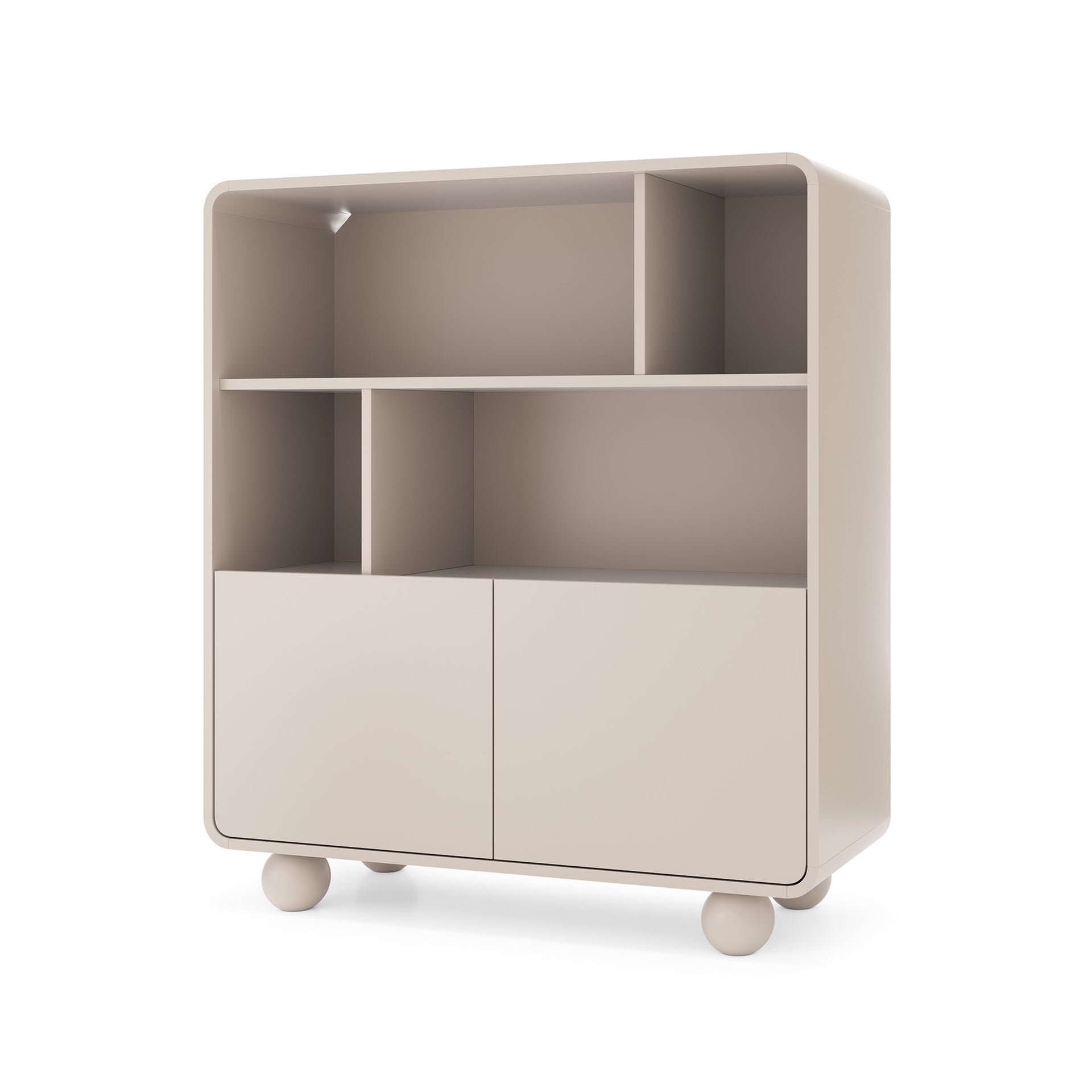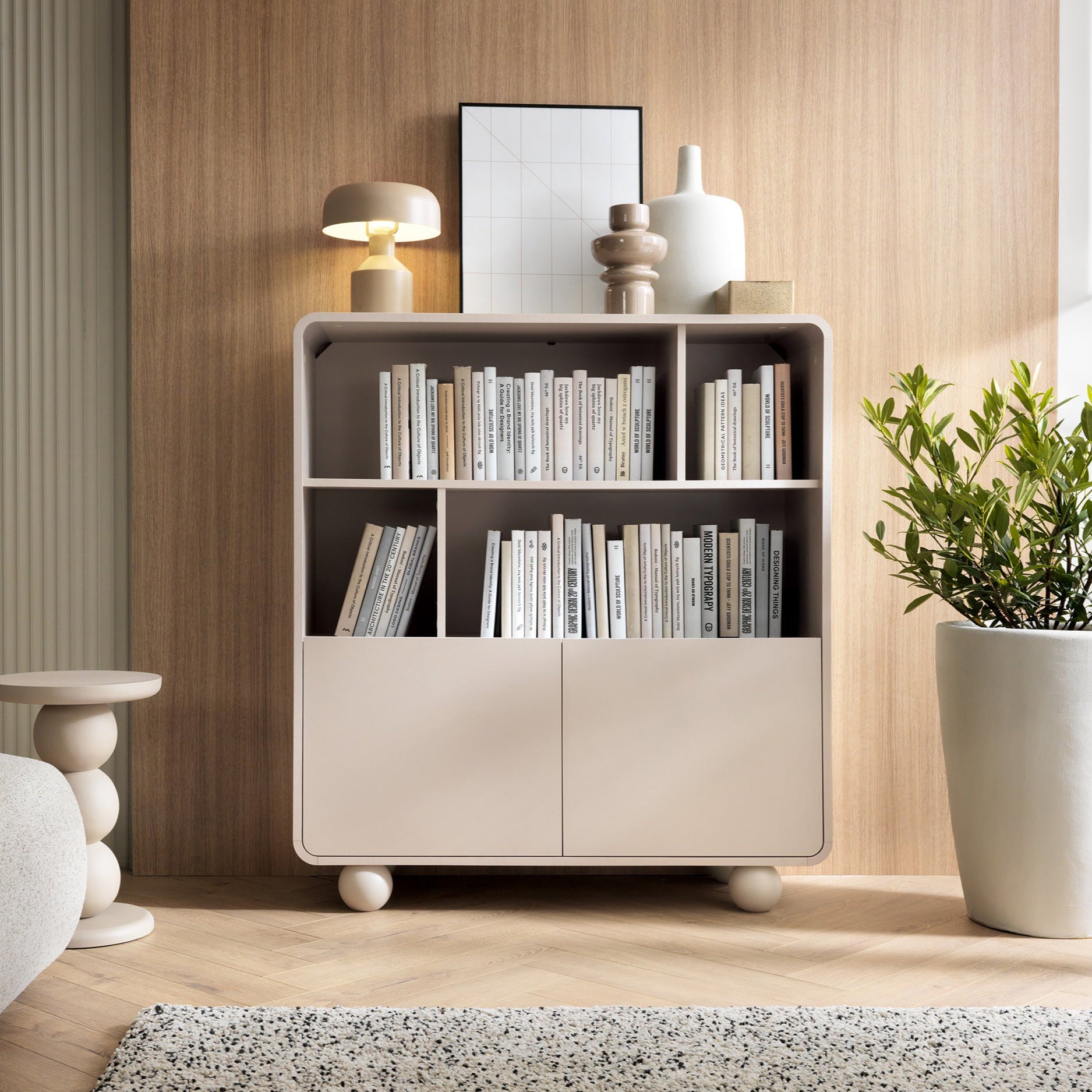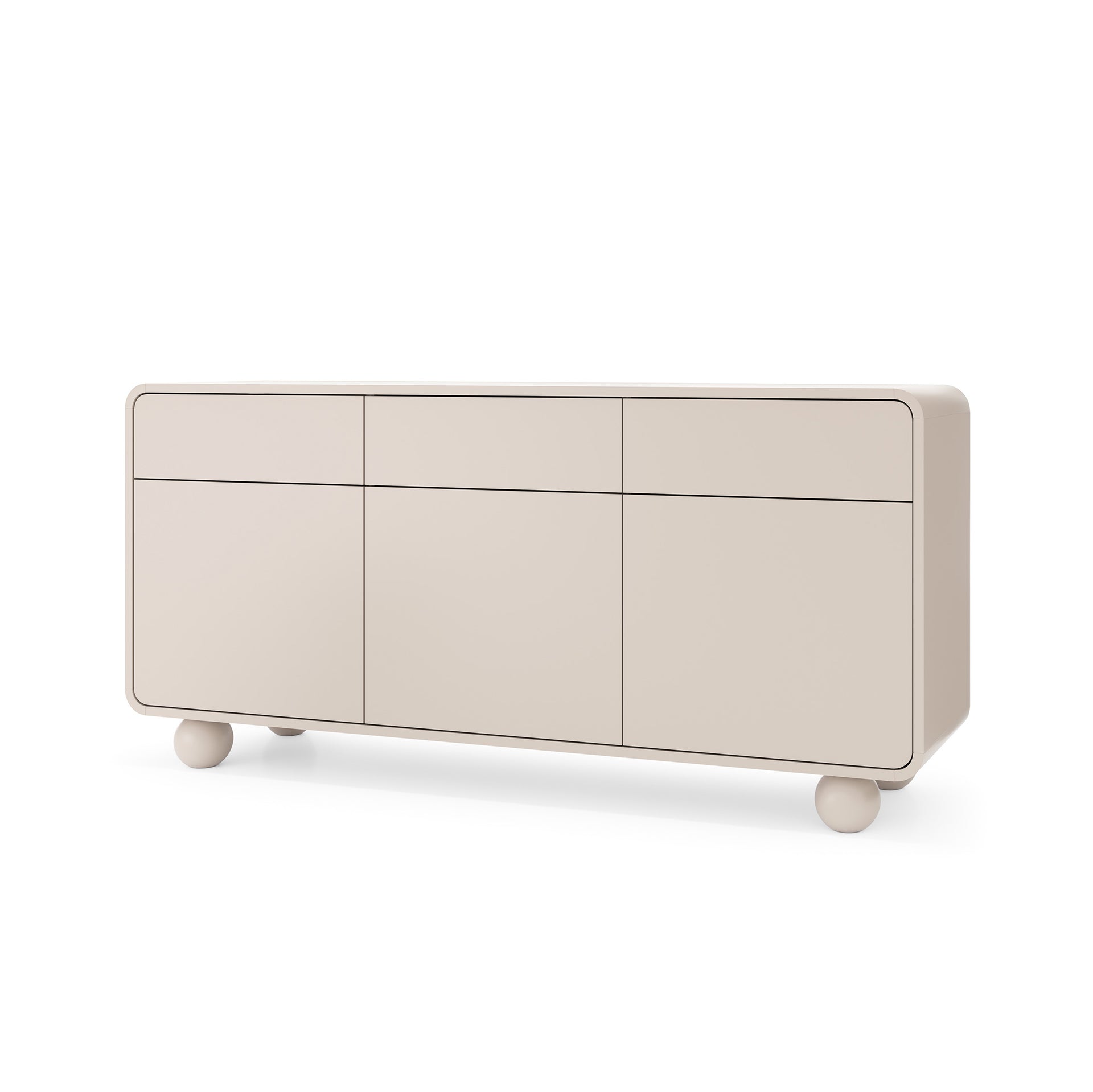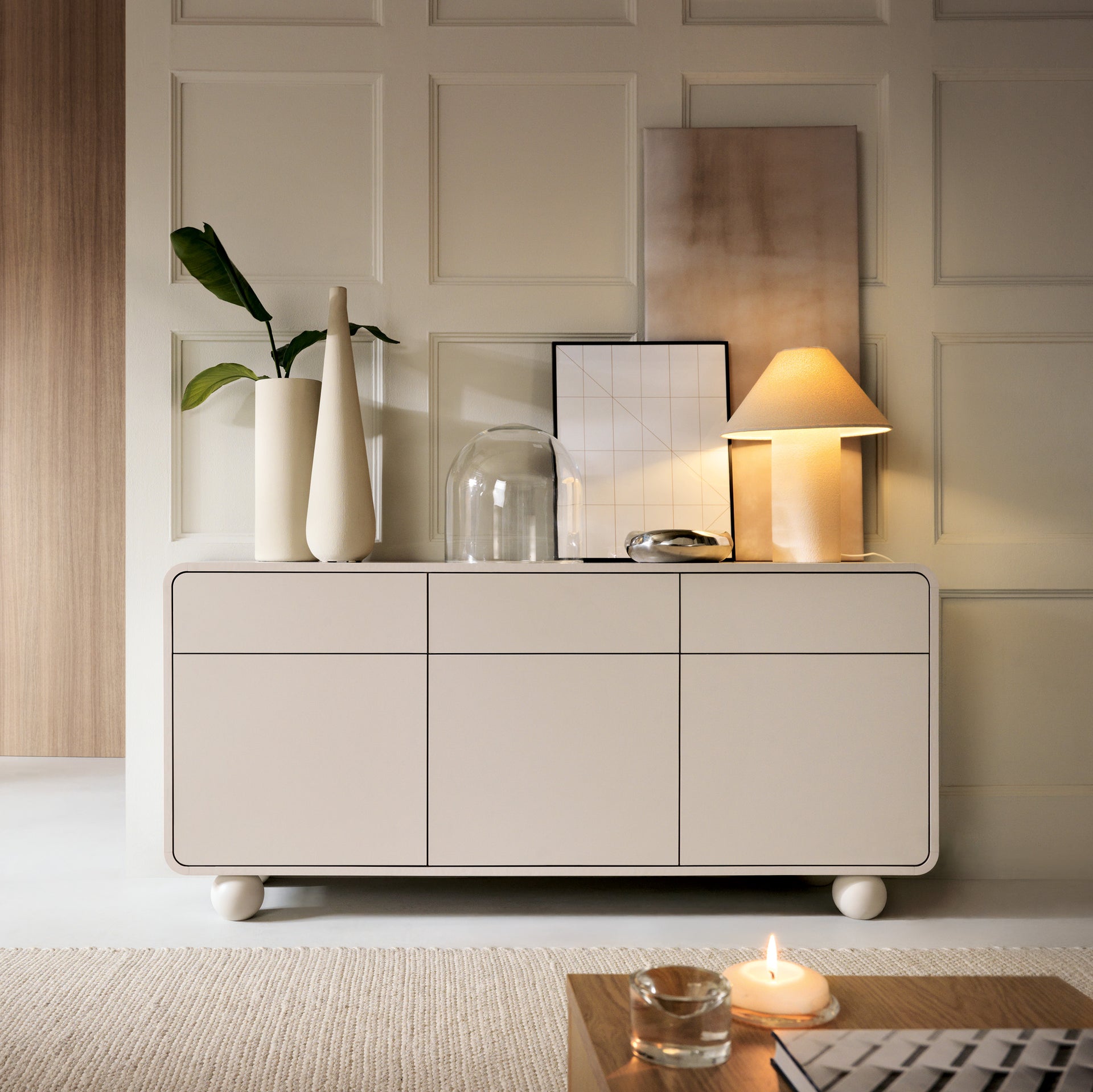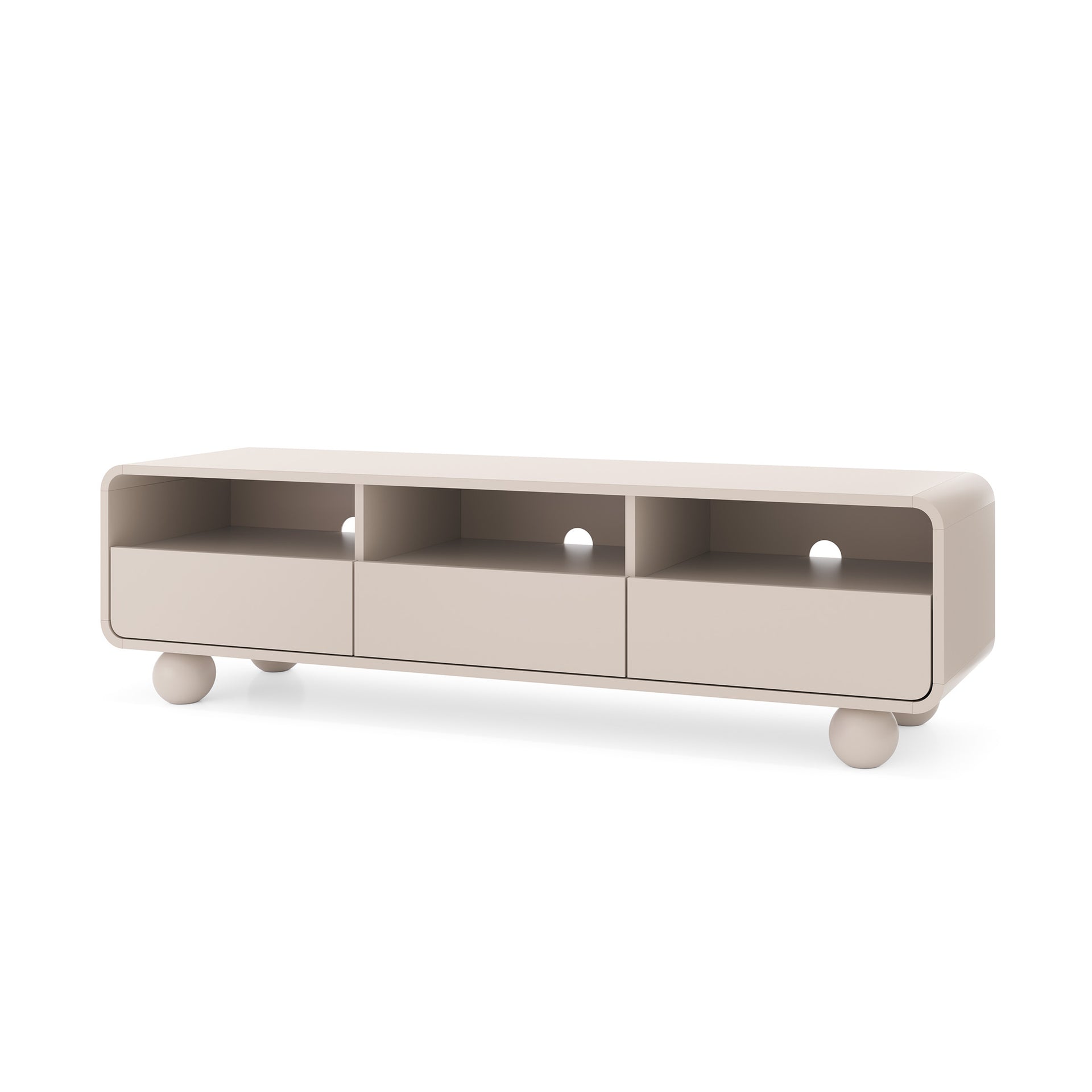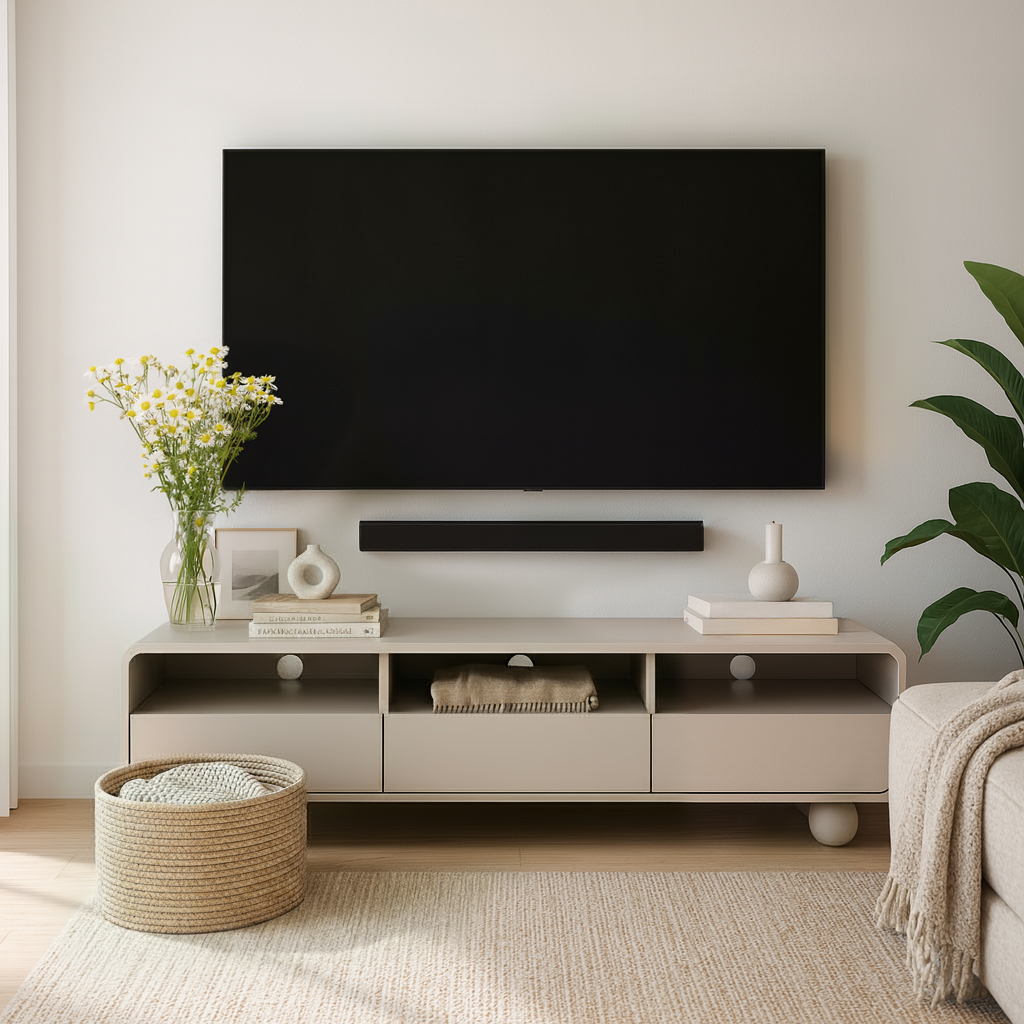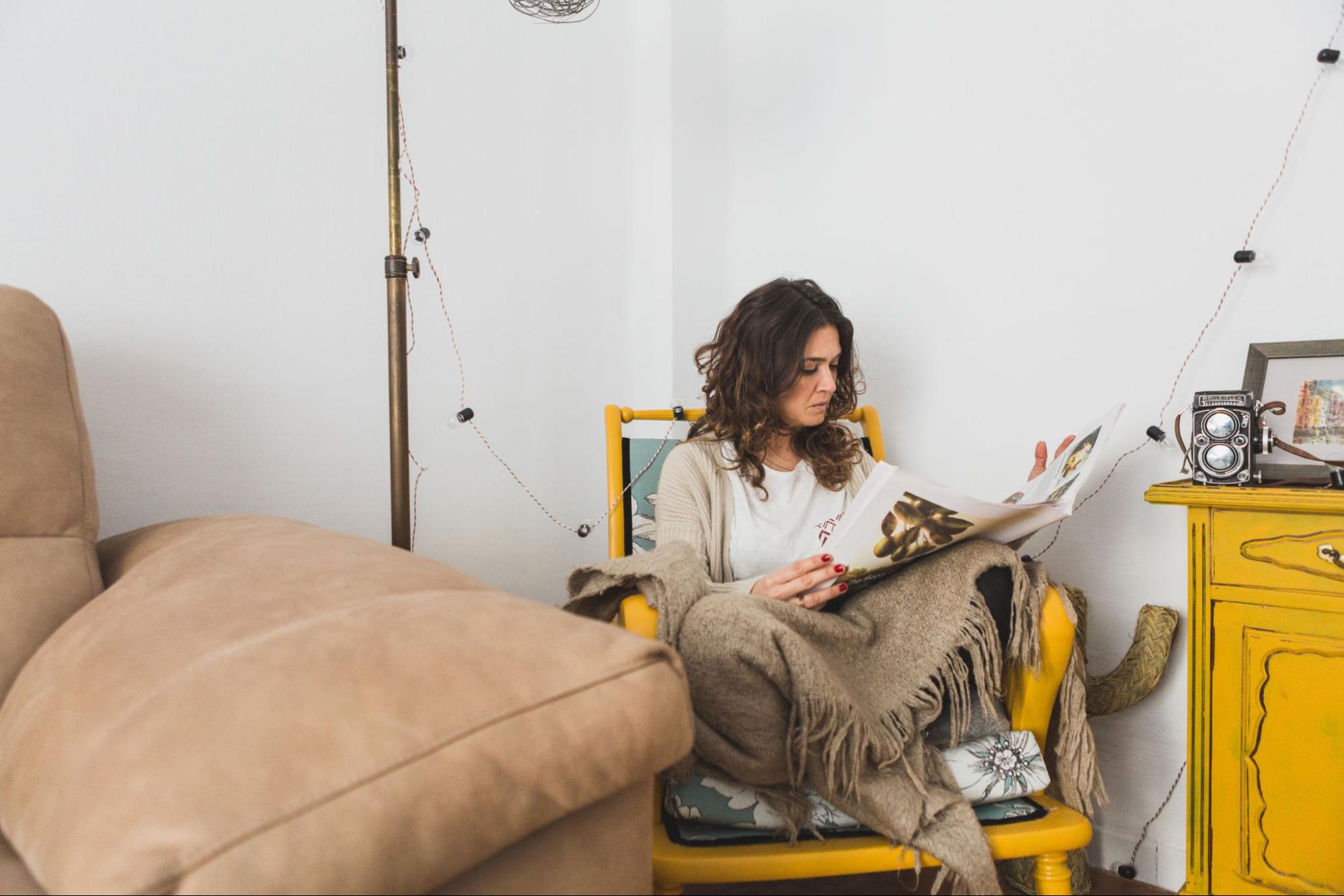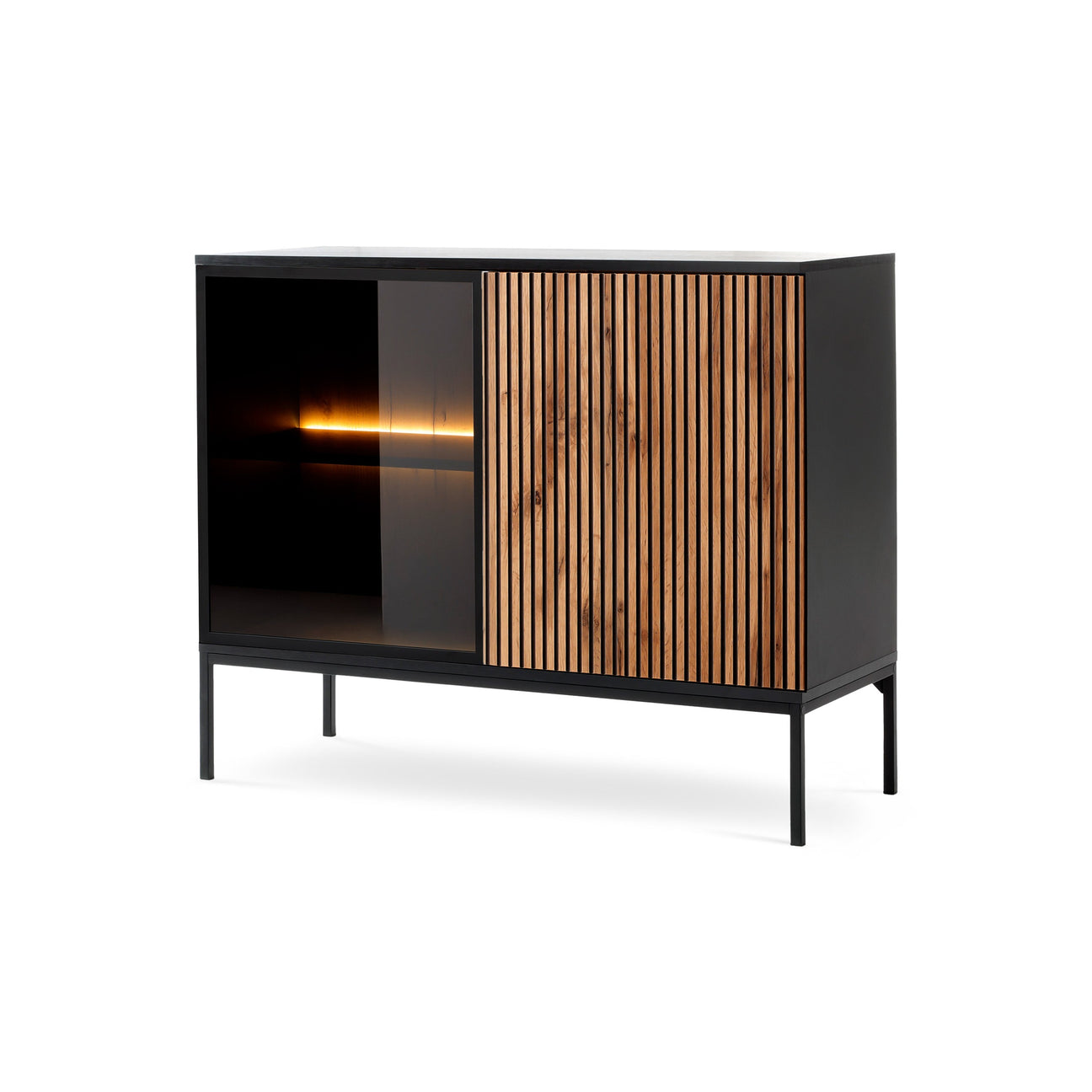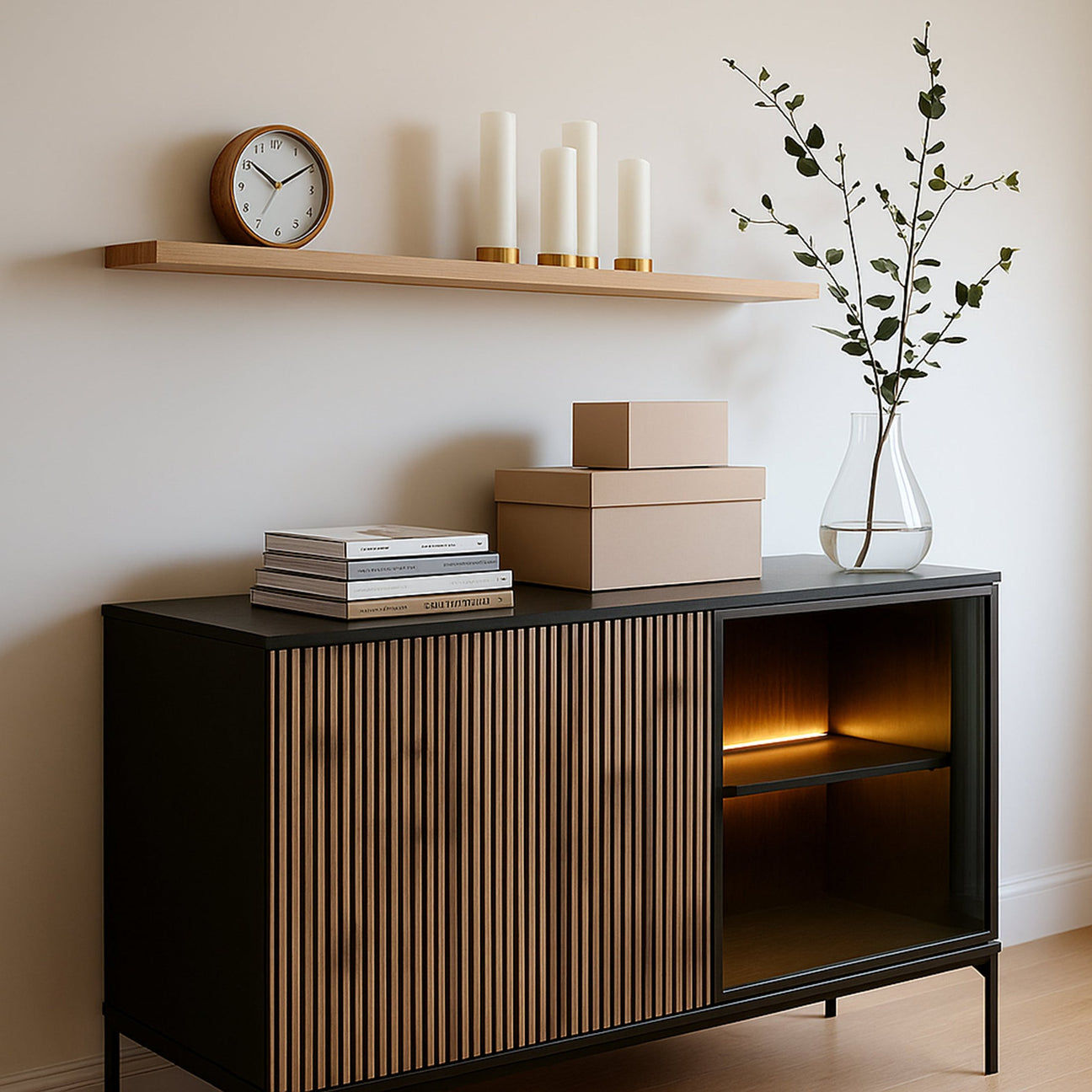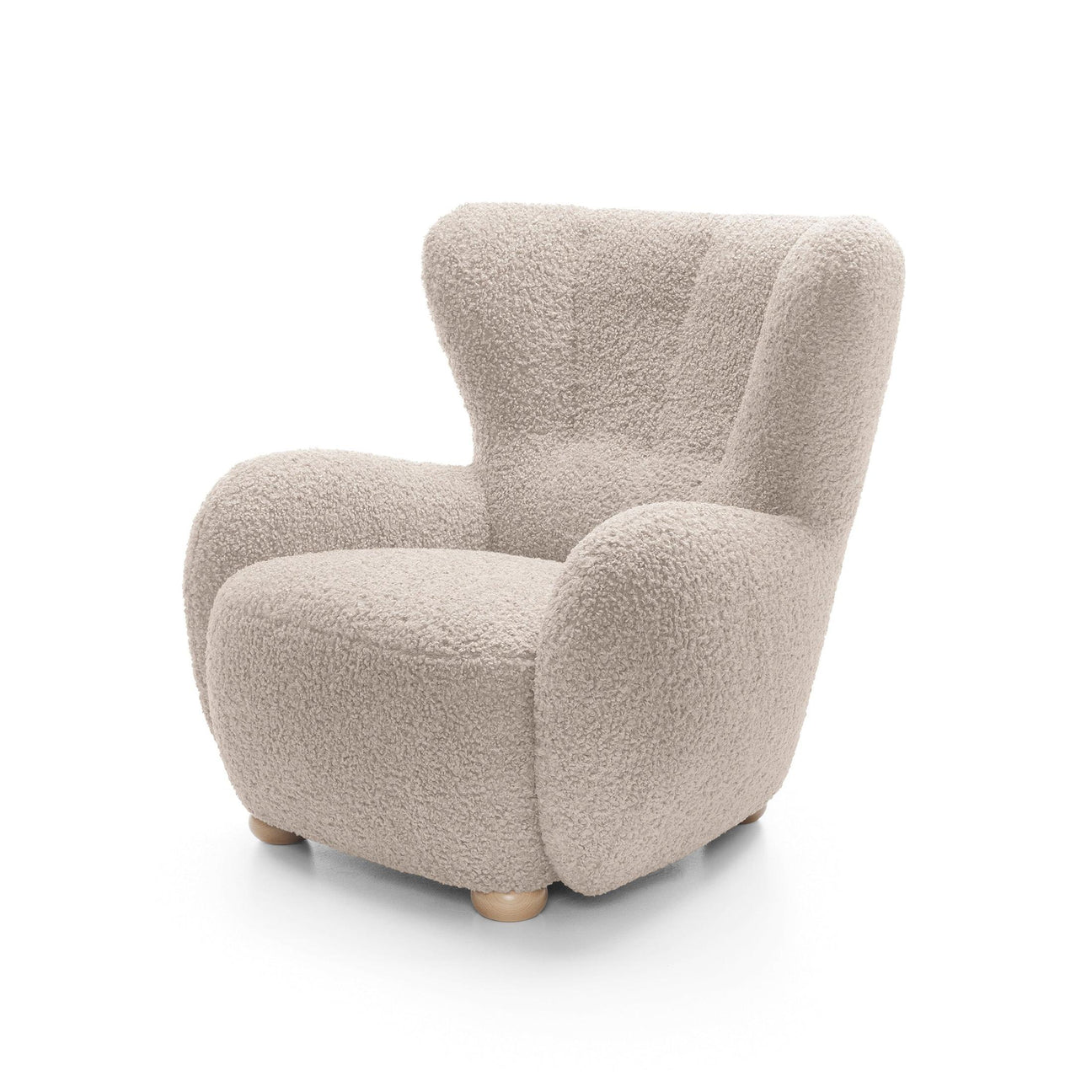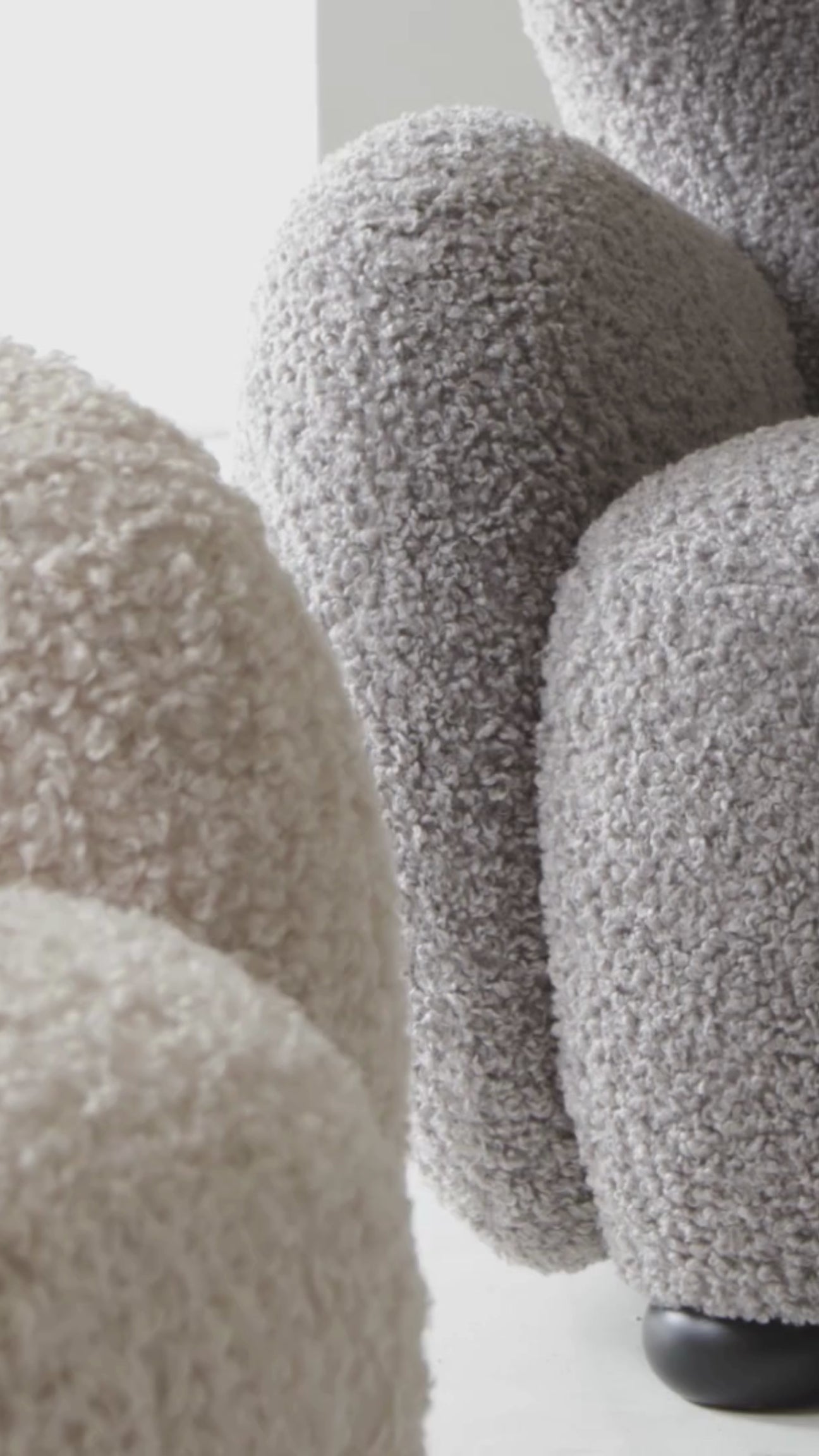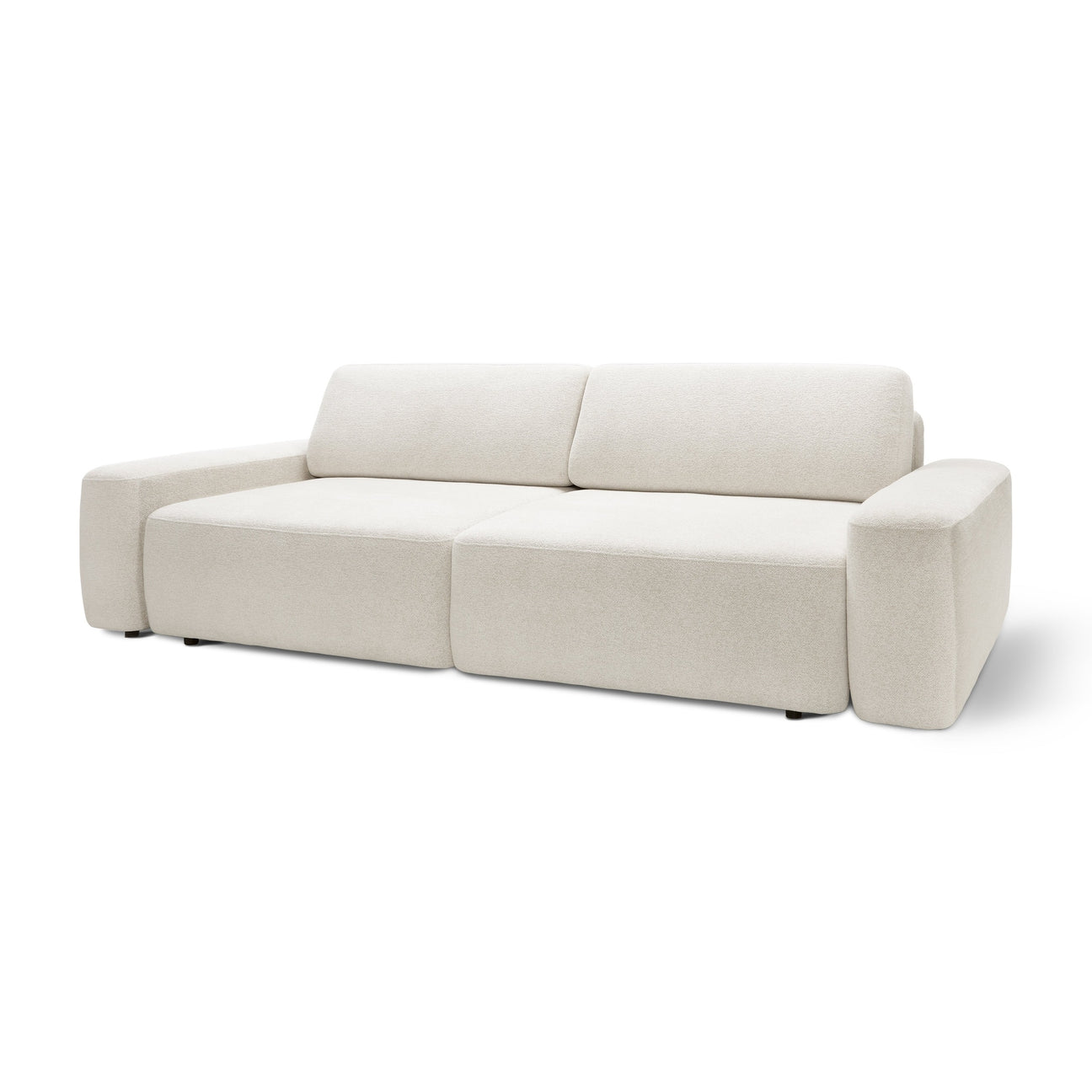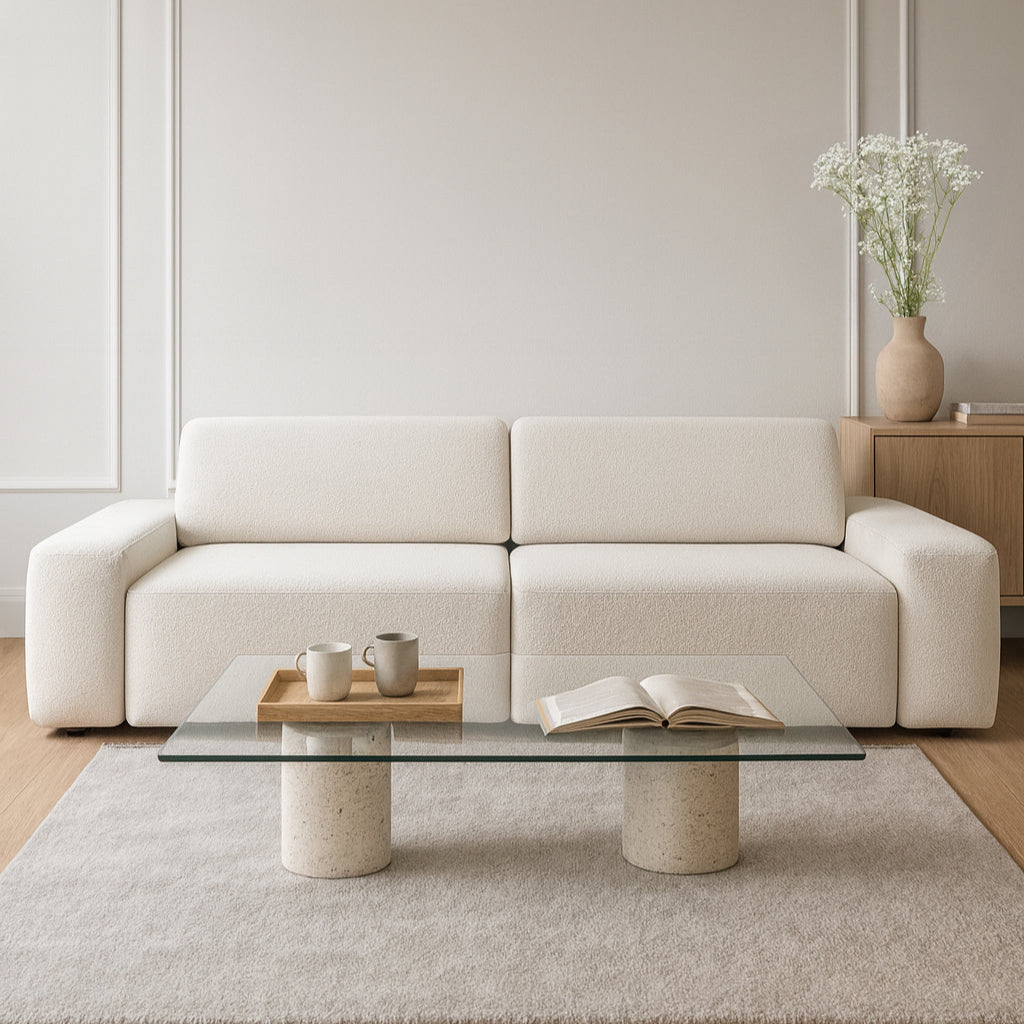Do you remember that moment from your childhood when your family moved into a new apartment and Grandma's old chest of drawers was supposed to be placed next to a modern IKEA sofa? Mom was torn – would it look nice, or would it be better to leave the old furniture in the old house? Dad shrugged, but in the end, the chest of drawers found its place in the new living room, and over time, you realized that this very combination gives a house its soul, history, and character.
Today, what was once a design issue has become one of the strongest design trends. Combining vintage with modernity isn't just a fad—it's a philosophy of life that demonstrates that beauty has no expiration date, and that history can coexist with the future. It's an approach we at Pillovely call "love for the warmth of home" —the ability to create spaces that tell the stories of all generations simultaneously.
But how do you do it right? How do you make a vintage wardrobe look not like a random guest in a modern living room, but rather like an integral element of a well-thought-out arrangement? How can you combine different decades, styles, and design styles to create something beautiful, cohesive, and—above all—authentically yours?
The Mixing Revolution: From Chance to Art
Just thirty years ago, apartments were decorated "by style"—either modern, classic, or provincial. Mixing was a sign of a lack of taste, inconsistency, perhaps even poverty, forcing one to make do with what was available.
The first revolution came in the 1990s, when designers began consciously combining vintage accents with modern architecture. Philippe Starck placed designer chairs next to antique chests of drawers, and Kelly Wearstler blended Art Deco with Californian minimalism. These were bold experiments that demonstrated that different eras could work together.
The turn of the 21st century brought a democratization of this trend. Younger generations, growing up in a global culture of remixes and mash-ups, began to naturally blend styles in their homes. The first generation to grow up with the internet learned that it was possible to draw inspiration from every era simultaneously.
Today, eclecticism isn't a coincidence, but an art. Skillfully combining vintage with modernity requires knowledge, a sense of proportion, and—above all—an understanding that a home should tell a story about the people who live in it, not about one specific era.
A Pop Culture Genealogy of Style Mixing
Pop culture has always been the most powerful teacher of design. "Mad Men" showed us what the 1960s could look like in a contemporary setting—not as an idealized museum, but as the living interiors of people who live in the present but appreciate the aesthetics of the past.
"The Marvelous Mrs. Maisel" went further – showing how vintage can be glamorous without being costume-y. Midge Maisel's interiors are a perfect blend of the 1950s and something that could exist today. It's a lesson in how vintage can be timeless.
Instagram changed everything. Suddenly, everyone could see thousands of examples of successful style blending, be inspired by designs from around the world, and learn from the best. #vintagemodern , #eclecticdesign , and #grandmillennial were the hashtags that defined a new aesthetic.
TikTok has brought another wave – young people are showing how they find vintage treasures at flea markets, how they renovate them, and how they incorporate them into modern interiors. This generation has no qualms about mixing eras, having grown up in a culture where anything is possible at the same time.
Contemporary series like "Emily in Paris" or "Bridgerton" (in a modern version) show us another evolution – vintage not as nostalgia for the past, but as a source of inspiration for the future.

The Psychology of Nostalgia in the Modern World
Why do we need vintage in our interiors so much right now? Psychologists talk about anticipatory nostalgia – we long for a past we haven't experienced ourselves, but which seems more authentic to us than the present.
In a world of rapid change, social media, and constant updating, vintage furniture gives us a sense of continuity, stability, and rootedness. It's not an escape from modernity—it's a way to embrace it. When we combine grandma's chest of drawers with a modern sofa, we're doing more than just arranging an interior—we're building a bridge between where we come from and where we're going.
Personalization is yours, you create it yourself – and this personalization today is multifaceted. We don't just choose between different modern styles, but between every style that has ever existed. This offers enormous freedom, but also responsibility.
The Anatomy of Successful Eclecticism
How can you make vintage meets modern look like a well-thought-out composition, not a random collection? There are proven methods.
The 70/30 rule – approximately 70% of the interior should represent one dominant style (usually modern), while 30% can be vintage or eclectic. This ensures visual cohesion but allows for distinctive accents.
Repeating elements – colors, materials, proportions. If your vintage dresser has brass handles, replicate the brass in a modern lamp. If an old armchair has suede upholstery, incorporate suede in the new cushions.
Contrast, but not conflict – contrasting, but not contradictory, combinations look most beautiful. A minimalist Scandinavian sofa pairs beautifully with an ornate chest of drawers from the 1970s, as one element provides a breath of fresh air, while the other adds character.
History, but not a museum piece – vintage accents should feel like living interior elements, not museum pieces. This means they may show signs of wear and tear, but they should be functional and integrated into everyday life.

Different decades, different approaches
Each vintage decade has its own distinctive design language that engages with modernity in a different way.
The 1950s and 1960s are all about clean lines, bright colors, and optimistic forms. These elements blend beautifully with contemporary minimalism – they share a philosophy of simplicity, but add warmth and playfulness. A vintage lamp from the 1960s in a modern living room is like a smile in a serious conversation.
The 1970s were an era of earth tones, natural materials, and organic shapes. The 1970s harmonize perfectly with contemporary eco-design and biophilic interiors. Macramé, rattan, ceramics—these elements not only look beautiful but also philosophically align with today's environmental concerns.
The '80s are a challenge – bold colors, geometric patterns, sometimes overwhelming opulence. But that's precisely why they can be fascinating accents in minimalist interiors. A single statement piece from the '80s can enliven the most neutral space.
Art Deco (1920s-1930s) is all about timeless elegance—geometric patterns, luxurious materials, and sophisticated proportions. Art Deco elements are perhaps the easiest to integrate with modernity, as they possess a universal class.
Practical Magic: Concrete Ways to Connect
Layering textiles – a modern sofa can gain a vintage feel with an antique rug, an old throw from Grandma's house, or vintage pillows. This is the easiest way to incorporate nostalgia without a major investment.
Lighting Mixing – Modern LED spotlights can illuminate vintage lamp stands, creating the perfect balance between functionality and atmosphere. Light layering is an art in which vintage can play a major role.
Artwork as a bridge – vintage posters, photographs, and paintings can be the perfect link between different eras in a single interior. They don't take up much space, but they dramatically change the character of the space.
Functional vintage – not everything vintage has to be decorative. A vintage coffee table can serve just as well as a modern one, but it will add character. An old typewriter can be a working desk decoration in a home office.
Statement pieces – one large, distinctive vintage piece (like an antique armchair or ornate mirror) can set the tone of an entire room, even if the rest is modern.

Renovation as an art form
Ecology in furniture restoration tips – it's not only environmental responsibility but also a creative opportunity. Restoring antique furniture is a way to create unique pieces that perfectly complement your space and aesthetic.
Transforming old furniture has become an art form. An old chest of drawers can get a new coat of paint, new hardware, or even be adapted to modern needs (for example, storing a laptop in an old writing desk). It's a process that respects history while adapting it to current life.
Professional restoration vs. DIY customization – Some pieces deserve professional care, especially if they have real historical or sentimental value. But many vintage finds can be DIY projects – and that's part of the fun. Whether you're sanding, painting, or upholstering, you're creating a personal connection with the piece.
The Patina Dilemma – Should You Keep the Original Patina or Completely Refresh It Depends on the Piece, Your Space, and Your Philosophy. Sometimes a worn look adds authenticity, sometimes a fresh finish makes a vintage piece blend better with contemporary pieces.
Different generations, different approaches to vintage
Baby Boomers often own authentic vintage furniture—inherited from their parents or grandparents. For them, the challenge often lies in integrating these emotionally significant items with their contemporary lifestyle. These pieces carry their own stories, memories, and sentimental value.
Generation X grew up with some vintage pieces in their families, but they also freely mix and match different periods. They value both authenticity and functionality. For them, vintage often represents quality from the past in an increasingly disposable world.
Millennials popularized the vintage trend via social media. They are often treasure hunters, thrift store explorers, and Instagram stylists. For them, vintage is a way to create a unique, personal space on a limited budget. They celebrate imperfection, eclecticism, and the storytelling of objects.
Generation Z approaches vintage differently – they don't necessarily miss the "good old days" (which they never experienced), but they appreciate the aesthetics, uniqueness, and sustainability. For them, vintage can be ironic, playful, and experimental.
Each generation brings a different perspective to the mix of vintage and modern, and all of these perspectives have value. A home can reflect different generational tastes if done thoughtfully.

Mistakes and Pitfalls: What to Avoid
The "amusement park" effect —when an interior looks like a perfect recreation of a specific decade instead of a contemporary living space. Real life is not a museum exhibit.
Clutter masquerading as eclecticism – mixing eras doesn't mean mixing everything. Moderation is still necessary, selection is still necessary, and visual space is still necessary.
Ignoring proportions – An antique piece of furniture may be beautiful, but if it is the wrong scale for your space, it won't work, no matter how perfectly it has been restored.
Forgetting about functionality – vintage charm shouldn't affect how you actually live. A beautiful antique armchair is worthless if it's too uncomfortable to actually use.
The paralysis of perfectionism – waiting for the perfect antique piece instead of enjoying the process of gradually building an eclectic space. Eclecticism should be a life experience, not an unfinished project.
Trends within a Trend: What's Happening Now
Grandma's Elegance Style – Young people are embracing traditional elements with a fresh twist. Think floral patterns, embroidery, and traditional silhouettes, paired with contemporary furnishings and a modern lifestyle.
Brutalism meets vintage – a surprising trend combining raw concrete architecture with soft vintage textiles and warm wood elements. The contrast creates drama and interest.
Sustainable luxury – vintage furniture as an eco-friendly alternative to fast-fashion furniture. High-quality vintage pieces often last longer than modern, mass-produced pieces.
Digital integration – antique furniture receives modern upgrades. Old radio cabinets with modern sound systems, antique desks with modern technology, traditional lamps with smart bulbs.
The return of color – after years of neutral minimalism, people are increasingly embracing vintage colors – burnt orange, olive green, and mustard yellow. These colors add warmth and personality to contemporary spaces.

The future of mixing styles
The trend of combining vintage with modernity isn't a passing fad—it's a fundamental shift in how we think about home design. In an increasingly globalized world, people are increasingly in need of personal, unique spaces that tell their individual stories.
Technology will play a greater role in helping people imagine how vintage furniture will work in their spaces. Augmented reality apps, 3D modeling, and online styling services make it easier to experiment before making a decision.
Concern for sustainability will only grow , making antique and repurposed furniture even more attractive. Environmental awareness and aesthetic preferences are increasingly congruent.
Appreciating Craftsmanship – In a world of mass production, handmade and historically crafted furniture offers an authenticity and quality that is harder to find today.
Your personal eclectic story
You are someone. You are valuable. And your home should reflect all aspects of who you are—your history, your dreams, your influences, your evolution. Blending vintage with contemporary allows you to honor the past while embracing the future.
Maybe you inherited your grandmother's dresser but live in a contemporary apartment. Maybe you fell in love with a mid-century chair at a flea market, but your overall style is Scandinavian minimalism. Maybe you appreciate traditional craftsmanship but crave contemporary functionality.
All these seemingly contradictory desires can coexist beautifully in a thoughtfully designed space. Loving the warmth of home doesn't mean choosing between old and new—it means creating a space where both feel welcome, where all parts of your story have their place.

A Practical Beginning of Your Adventure with Eclecticism
If you've never mixed styles before, start small. Add one vintage element to a predominantly contemporary space. See how it changes the energy, how it makes you feel. It could be an antique mirror, a vintage lamp, or a refurbished armchair.
Live with it for a few weeks. Notice how it affects your daily routine, your mood, and your relationship with the space. Does it feel natural? Does it bring you joy? Does it make the space feel more like you?
Gradually add more vintage pieces, but continue to evaluate. Each addition should enhance the overall harmony, not disrupt it. Remember, the goal is to create a space that feels authentically yours, not to impress others with your design expertise.
Trust your instincts more than rules. Rules are helpful guidelines, but ultimately, your home should reflect your personal aesthetic and lifestyle needs. If something feels good in your space, it probably is good, regardless of what design books say.
A place where all times meet in harmony
Ultimately, the trend of combining vintage with modern is more than just an aesthetic choice—it's a philosophy of life that embraces complexity, appreciates history, and celebrates individuality. At Pillovely , we believe that the most beautiful homes are those that tell rich, multi-layered stories, where every element has meaning and purpose.
Your home can be a gallery of your influences, a museum of your memories, and a laboratory for future experiments. Antique furniture isn't relics of the past—it's living elements that continue to serve, beautify, and inspire. Contemporary pieces aren't soulless objects—they're tools of modern life, an expression of current needs and aspirations.
When you combine old and new, you create something completely unique —a space that couldn't exist in any other time, place, or home. This is true personalization, true authenticity, a sincere expression of individual taste and lifestyle.
Pillovely is a place where you will find your perfect balance between respecting the past and enjoying the benefits of the future.


